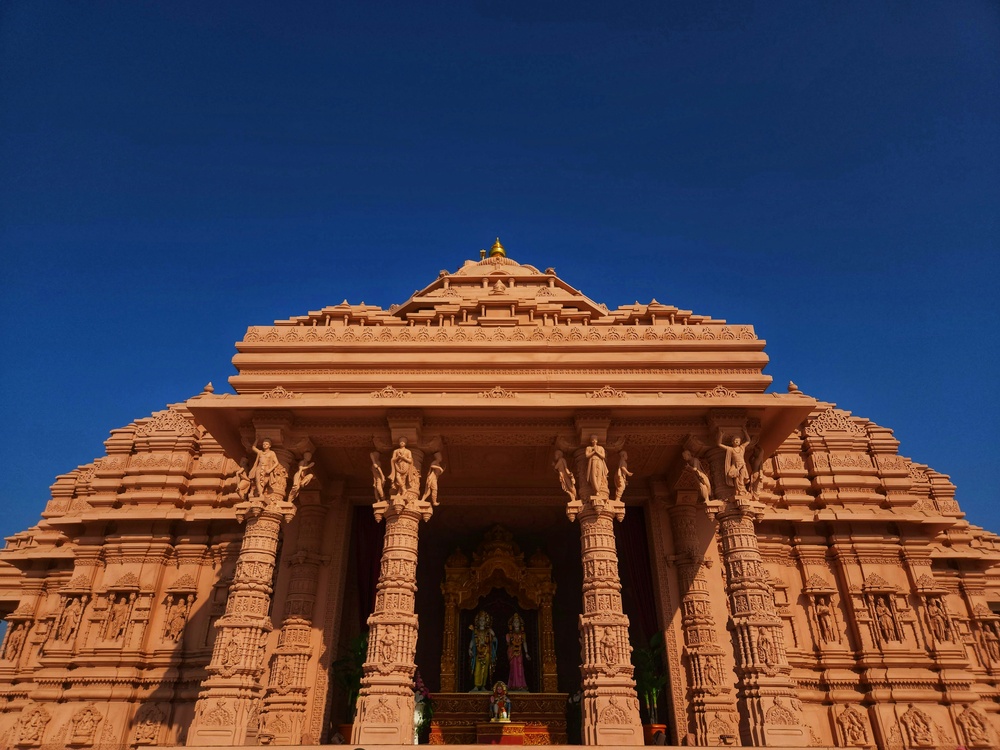
Ayodhya, the ancient city nestled on the banks of the holy Sarayu River in Uttar Pradesh, is a revered destination for Hindus across the globe. Known as the birthplace of Lord Rama, Ayodhya holds immense religious, spiritual, and historical significance. With its temples, ghats, and cultural richness, Ayodhya welcomes millions of pilgrims and tourists every year. But to truly experience its divinity and charm, it's essential to know the best time to visit Ayodhya.
In this guide, we’ll walk you through the seasonal variations in Ayodhya, helping you decide the ideal time to plan your visit—whether for spiritual rejuvenation, sightseeing, or cultural immersion.
Winter (October to March): The Most Ideal Time
Why Visit in Winter?
Winter is undoubtedly the best time to visit Ayodhya. The weather during these months is pleasant and comfortable, with temperatures ranging between 8°C to 25°C. The cool breeze and clear skies create the perfect ambiance for temple visits, long walks along the Sarayu River, and participating in religious ceremonies.
Key Events and Festivals
- Ram Vivah (October/November): Celebrates the divine wedding of Lord Rama and Sita with grand processions and rituals.
- Diwali (October/November): Ayodhya’s Diwali is unmatched, with the city lit up by thousands of diyas. The grandeur of this celebration draws tourists from across the globe.
- Makar Sankranti (January): A spiritually significant day marked by holy dips in the Sarayu and kite flying.
- Ram Navami (March/April, sometimes falls in March): Marks the birth of Lord Rama. The city comes alive with religious fervor, attracting thousands of pilgrims.
Travel Tips
- Book your accommodation in advance, especially during festivals.
- Pack warm clothes, especially for early mornings and late evenings.
Verdict: For a spiritually enriching and weather-friendly experience, winter is the best time to visit Ayodhya.
Summer (April to June): For the Brave-Hearted Devotees
Weather Overview
Summers in Ayodhya can be intense, with temperatures soaring up to 45°C during peak May and June. The scorching heat and dry winds make daytime sightseeing challenging. However, for pilgrims committed to observing certain rituals or participating in religious observances, summer can still be manageable with proper planning.
Highlights
- Ram Navami (if it falls in early April): Despite the rising heat, many devotees visit the Ram Janmabhoomi and Kanak Bhawan during this important festival.
- Less Crowd: Fewer tourists mean a quieter and more personal experience at temples.
Travel Tips
- Stay hydrated and carry sunscreen.
- Prefer early morning or late evening visits to temples and sites.
- Choose accommodations with air conditioning.
Verdict: Not ideal for leisurely sightseeing, but manageable for dedicated pilgrims with the right precautions.
Monsoon (July to September): A Refreshing Yet Tricky Season
Weather Overview
The monsoon season transforms Ayodhya into a lush, green landscape with frequent showers and high humidity. While the rains add a refreshing touch to the surroundings, they can also disrupt travel plans, especially for those exploring on foot.
Pros and Cons
Pros:
- The city looks beautiful with lush greenery.
- Fewer crowds compared to winter.
Cons:
- Slippery roads and muddy ghats.
- Some outdoor temples and events may be less accessible.
Events
- Shravan Month Celebrations (July/August): Devotees flock to temples during this holy month, especially on Mondays.
- Krishna Janmashtami (August): Although more associated with Mathura, Janmashtami is celebrated with devotion in Ayodhya as well.
Travel Tips
- Carry an umbrella and raincoat.
- Wear sturdy footwear with good grip.
- Check local weather forecasts before planning day trips.
Verdict: A scenic but less predictable time. Best suited for monsoon lovers and off-season travelers.
Month-by-Month Travel Guide
- October to March: Ideal for all travelers. Great weather, festive atmosphere, and spiritual events.
- April to June: Hot and dry. Best avoided unless visiting for a specific religious reason.
- July to September: Humid and wet. Good for those looking to avoid crowds and enjoy lush scenery.
Conclusion: When Should You Go?
While Ayodhya is a year-round destination for the spiritually inclined, the best time to visit Ayodhya is undoubtedly during the winter months from October to March. Not only is the weather favorable, but the festive calendar also makes this period vibrant and fulfilling for both pilgrims and tourists.
Whether you're here to pay homage at the Ram Janmabhoomi, explore the ancient ghats, or simply soak in the peaceful ambiance, choosing the right season can greatly enhance your experience.

















